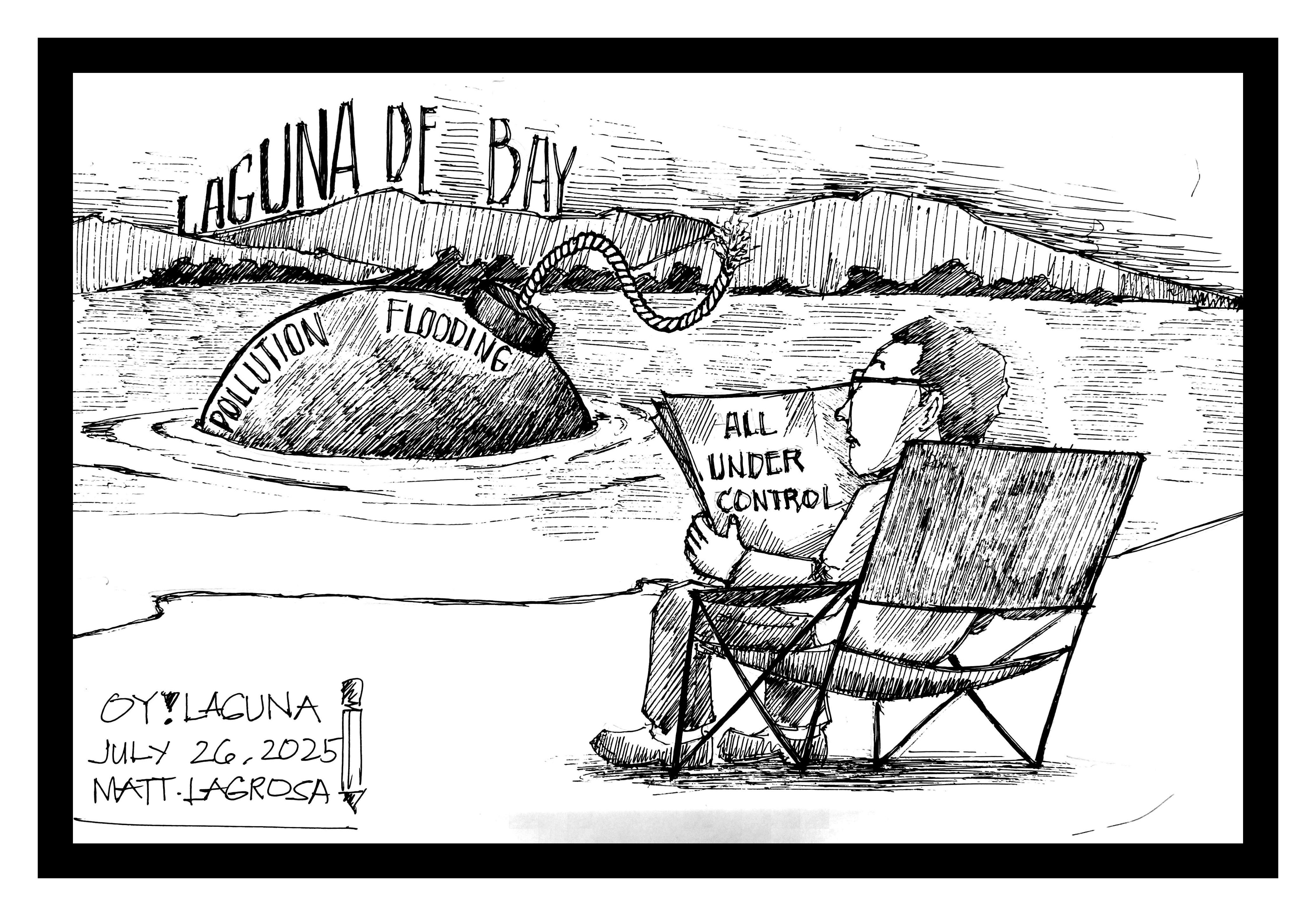If they could reckon the state of Laguna de Bay, the Philippines’ largest freshwater lake, in medical terms, experts can probably declare the lake is nearing a “terminal” condition.
A 2021 study conducted by students from the University of the Philippines - Los Baños campus concluded that the lake is under an "extremely stressed ecosystem needing rehabilitation."
No doubt this is primarily due to pollution, runaway urbanization, and deforestation that has led to the lake’s reduced capacity to hold water, particularly during the rainy season.
As the old saying goes, desperate maladies require desperate remedies.
And the “remedy” that is needed to restore the ecological health of Laguna de Bay, not to mention its capacity to hold the increasing runoff during the rainy season, is indeed a radical one.
Dredging the lake – as some local government officials had insisted – may help alleviate the problem of increasingly severe flooding along the communities near the shoreline.
And yet it’s a radical solution that few officials in the national government would even touch, no doubt because of its possible exorbitant cost. (The price tag of the 2010 attempt to dredge the lake that was later shelved amid allegations of corruption and midnight deals? A whopping P18.7 billion.)
Yet that price tag pales in contrast to the billions more that are lost in the economy during the rainy season. Not just due to the damages to agriculture and infrastructure, not to mention lives lost, but also in the cumulative cost to the economy of the stoppage of human movement when whole villages or towns are submerged in floodwaters.
Dredging Laguna de Bay may sound radical, even repugnant to some officials who are so used to “bandaid” solutions that they can plaster their names to.
But we must face the awful fact here: that radical cancers can only be removed by radical surgery.
#WeTakeAStand #OpinYon
#OpinYonNews #Editorial #LagunadeBay
